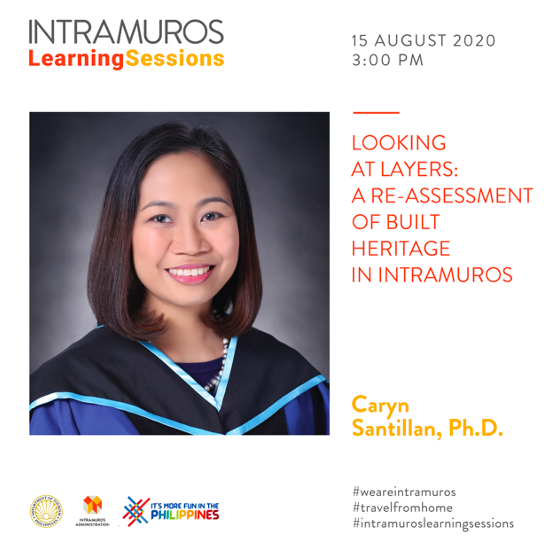Intramuros Learning Sessions episode no. 25

Overview
Intramuros has often been regarded as the most important of Spanish Colonial settlements in the Philippines. Its evolution spans almost five centuries, from the pre-Hispanic “supra baranggay” ruled by Rajah Sulayman, to becoming the center of Government and Religion during the Spanish Colonial, as well as the early part of the American Colonial Periods. Today, it stands as the symbolic heart of Manila, and as is the case in historic cities, it is part of a living, evolving heritage. Thus, it has had to deal with a wide range of issues that involve heritage conservation, public awareness, and cultural tourism, among others. This presentation attempts to understand the built heritage of Intramuros not only by examining its historical morphology, but also by looking at the layers of change in recent years. In particular, the current state of its built environment which includes the evolving uses and access points, as well as the styles and forms that make up the walled city.
- Guest speaker: Caryn Santillan, Ph.D.
- Moderator: Rancho Arcilla
About the Speaker: Caryn Santillan, Ph.D.
Caryn Paredes-Santillan has a BS in Architecture from the University of Santo Tomas, and an MA and a PhD from the Graduate School of Engineering of the University of Tokyo.
She is a consultant at the UST Center for Conservation of Cultural Property in the Tropics (UST-CCCPET) and was a Project Manager at the National Commission for Culture and the Arts (NCCA). She is also involved in a number of Conservation Management Plan studies, including those of the Walled City of Intramuros, Basilica Minore de San Sebastian, and the Manila Central Post Office Building.
She currently teaches at the College of Architecture of the University of Santo Tomas. Her main research interests include modern Asian architecture, architectural morphology, and phenomenology.
About the moderator: Rancho Arcilla
John Paul Escandor Arcilla, known professionally as Rancho Arcilla, is the author of the Intramuros Register of Styles (2021). He served as Chairperson of the Intramuros Technical Committee on Architectural Standards (TCAS) from June 2022 to May 2024. As TCAS Chairperson, Arcilla oversaw the review of all development, including new constructions, in the Walled City.
Arcilla was also the first Archivist of the Intramuros Administration. With a mandate from Atty. Guiller Asido, Administrator of Intramuros from 2017 to 2022, Arcilla established the Administration’s Archives and Central Records Section, serving as its first Section Head from July 2019 to June 2024.
He has an MA in Philippine Studies from UP Diliman and a BA in Asian Studies from the University of Santo Tomas. Arcilla specializes on colonial architecture.
In 2021, Arcilla was instrumental in the development of the Revised 2021 Implementing Rules and Regulations (IRR) of Presidential Decree No. 1616, the main framework and legal instrument in the management of Intramuros District. The architectural provisions of the IRR and the Intramuros Register of Styles (2021) is based on his MA thesis Walls within Walls: The Architecture of Intramuros (2021).
About the Intramuros Learning Sessions
The Intramuros Learning Sessions (ILS) is the educational lecture series of the Intramuros Administration (IA). The IA is an attached national government agency under the Department of Tourism.
Topics are interdisciplinary and cover themes related to Intramuros and Manila studies, Philippine studies, as well as cultural heritage studies. Pursuant to IA’s charter, the ILS aims to contribute to the strengthening of the Filipino’s national identity and sense of belonging and pride.
For inquiries contact us at research@intramuros.gov.ph
| See Previous ILS Episode Leoncio Asuncion’s Iconology and the 19th Century Philippine Colonial Religious Sculpture: An Analysis | See Next ILS Episode Santo Domingo Church and La Naval: The Intramuros Shrine and Its Rituals |
Check out our previous ILS episodes here
For more information contact the Center for Intramuros Studies via research@intramuros.gov.ph
Cannot find what you are looking for? Try requesting for more data via our eFOI Portal.





